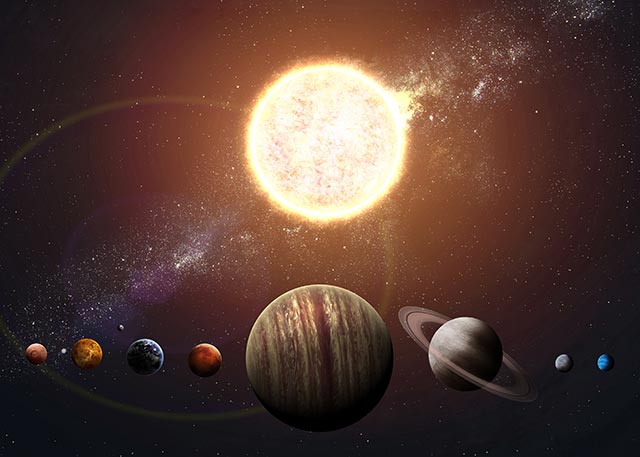NASA warns: Solar storms could cause “internet apocalypse” by 2025
04/03/2024 / By Kevin Hughes

The National Aeronautics and Space Administration (NASA) has warned that the Sun is entering a time of high volatility as it approaches the peak of its 11-year solar maximum cycle.
During this period, sunspots can produce intense solar storms, which if directed toward the Earth could create widespread outages to electronics and radio communications. The first two months of 2024 alone have witnessed a surge in solar activity, with sunspots producing numerous coronal mass ejections (CMEs), which are phenomena responsible for solar storms.
NASA, which has been watching the Sun’s activity using the Parker Solar Probe (PSP), warns the probability of a solar storm-caused “internet apocalypse” remains a cause for alarm through 2025.
Such an event could increase currents through the Earth’s infrastructure, destroying navigation, communications systems and the GPS-enabled time synchronization crucial to the operation of the internet.
Solar storms are an aspect of the solar system like any other, although they arrive with a severe amount of danger.
They can be attractive and harmless, with images showing awesome displays of auroral beacons. But they can also be destructive, as NASA has time and time again warned.
The PSP has successfully journeyed through solar winds in space to understand the phenomenon better. Scientists have long warned about the likely negative results of such storms, possibly the largest being what has been conceived as an “internet apocalypse” that could occur in 2025.
In simple terms, when a solar storm happens, magnetic fields tear through the Earth’s atmosphere and send current soaring through manmade infrastructure.
Sun launches CMEs toward Earth at least 20 times a week
The Sun launches CMEs toward Earth at least 20 times per week, based on where it currently is in its 11-year activity cycle. Nobody in living memory has experienced a burst that has seriously harmed human society.
The only recorded incident that caused some damage occurred in 1859, well before humans became dependent on electricity. The solar storm of that year was three times more powerful than the one that turned off power to a whole Canadian province in 1989.
If a CME on a comparable scale hit the Earth today as it did back then, electronics in orbiting satellites would be severely damaged, ruining navigation and communications systems, as well as the the GPS time synchronization that the internet depends on to work. Without power and the internet, society would come to a standstill. (Related: Solar storms could bring down modern civilization)
Some prediction models suggest that such an event could arrive as soon as 2025 when the Sun enters a specifically active period called the “solar maximum.”
Sangeetha Abdu Jyothi, a computer science professor at the University of California at Irvine, invented the term “internet apocalypse.”
“We’ve never experienced one of the extreme case events, and we don’t know how our infrastructure would respond to it. Our failure testing doesn’t even include such scenarios,” Abdu Jyothi said. He added that a solar storm could even interrupt things like submarine communication cables, which might obstruct long-distance connectivity.
The northern latitudes of the planet are especially vulnerable to such solar activity. There is no way to forecast how long the interruptions might last, but experts said they could go on for months.
Follow Space.news for more stories about activities in space.
Watch the video below about a solar storm hitting Earth possibly causing GPS and radio disruptions.
This video is from the High Hopes channel on Brighteon.com.
More related stories:
NASA can only give a warning 30 minutes before a killer solar storm, so PREPARE before SHTF.
Solar storms, magnetic pole shift loom as hundreds of dolphins and whales wind up dead worldwide.
Giant coronal hole on the sun creates second hole, unleashing solar winds toward Earth.
Sources include:
Submit a correction >>
Tagged Under:
CMEs, Collapse, Communications, computing, coronal mass ejections, cosmic, Earth, Glitch, GPS, grid collapse, information technology, internet, NASA, National Aeronautics and Space Administration, solar storms, Space, sun, telecommunications
This article may contain statements that reflect the opinion of the author
RECENT NEWS & ARTICLES
COPYRIGHT © 2017 SPACE.COM
All content posted on this site is protected under Free Speech. Space.com is not responsible for content written by contributing authors. The information on this site is provided for educational and entertainment purposes only. It is not intended as a substitute for professional advice of any kind. Space.com assumes no responsibility for the use or misuse of this material. All trademarks, registered trademarks and service marks mentioned on this site are the property of their respective owners.



















